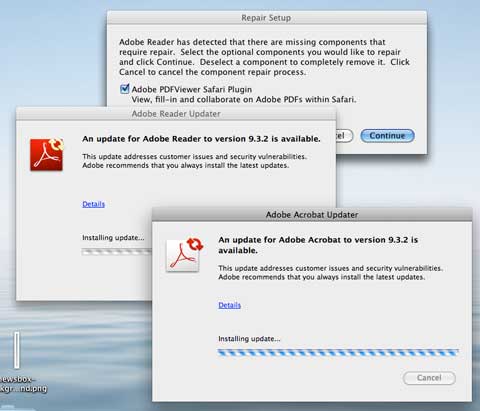I’d love to be able to defend Adobe. Really, I would. Their products are the mainstay of my career and I’ve been using them for something like 20 years. Unfortunately, that also gives me a long-term view of how the products and company have changed. The interfaces have become truly horrific, especially for Mac users — one of the hallmarks of the Mac OS is that the interface is relatively consistent from application to application, unlike Windows programs which seem to have completely different interfaces all over the place. Adobe has evidently decided that it is more efficient to design their own interface which is consistent not within the platform it’s running on, but within its own suite of apps (and even then it’s not). So, Windows users are presented with an alien interface, and Mac users are presented with an alien interface. The interface over the years has shifted significantly from one designed for… well, designers, to one that’s designed for programmers and tech types. Don’t even get me started on Flash, which has morphed into a programming application rather than a design app.
And it isn’t just the UI that’s an issue. I often run across bizarre behaviors and obvious problems that no one seems to have tested for. Here’s the example I ran into this morning that launched this blog entry.
As soon as I started up this morning, I was presented with TWO separate Adobe Updaters bouncing for attention: one for Adobe Acrobat Pro, and one for Adobe Reader. Why they couldn’t be combined into one updater app — which is also installed on my computer — I’ll never know, but that’s niggling.
Once the updates started, that’s when the fun began. The Acrobat updater did its thing, with a modal dialog floating on the screen. Then suddenly, it threw up another modal dialog — behind the first. And because there was a second modal, the first modal disabled the Cancel button until the second modal was dismissed. Only problem is, it was behind the first. Until one dismisses the front modal, one can’t dismiss the back modal — even though the buttons in the back modal are active, they won’t accept any mouse input until the front one is dealt with. Do you see what’s happening here?
Then, of course, the same thing happened with the Reader updater. Now I have 4 modal dialogs on my screen, the ones in front with grayed-out cancel buttons, and I can’t dismiss any of them.
I have no idea at this point if the updates have been installed. I can do absolutely nothing but force-quit the two updater apps. And naturally, you’d expect that this would clear everything up, right? Wrong.
The two modal dialogs in the background (one layered exactly on top of the other — you can’t grab it and drag it around the screen because it’s in the background) stay there. Every app is closed, the updaters have quit and taken the frontmost modals with them. And still these two remain floating, dead, mocking me.
The fix for all this? Restart my computer.
Oh, Adobe. I loved you once. Where is the Adobe that made my job easier all those years ago? Why do we fight so much now?
Wistfully,
Gene
